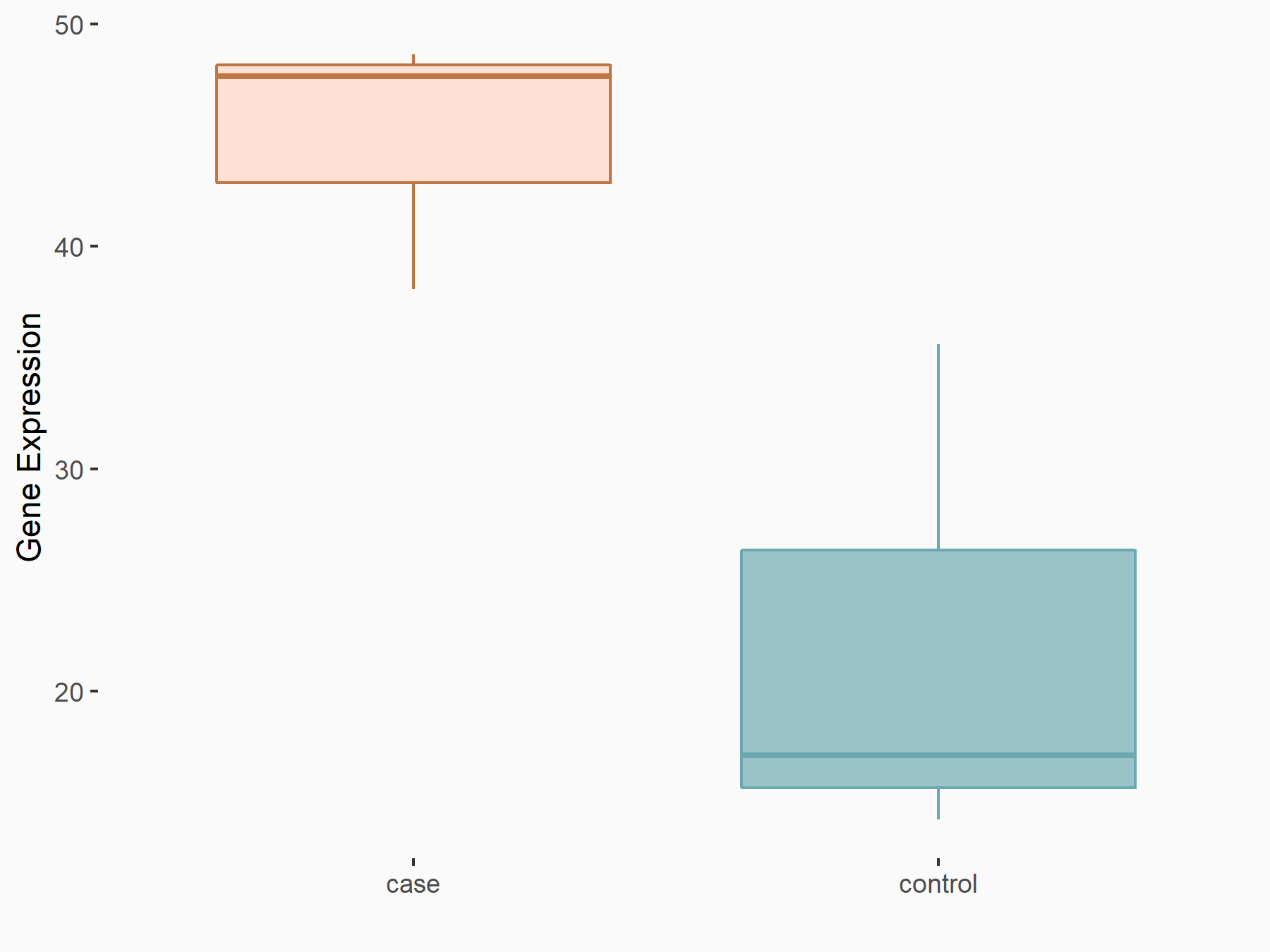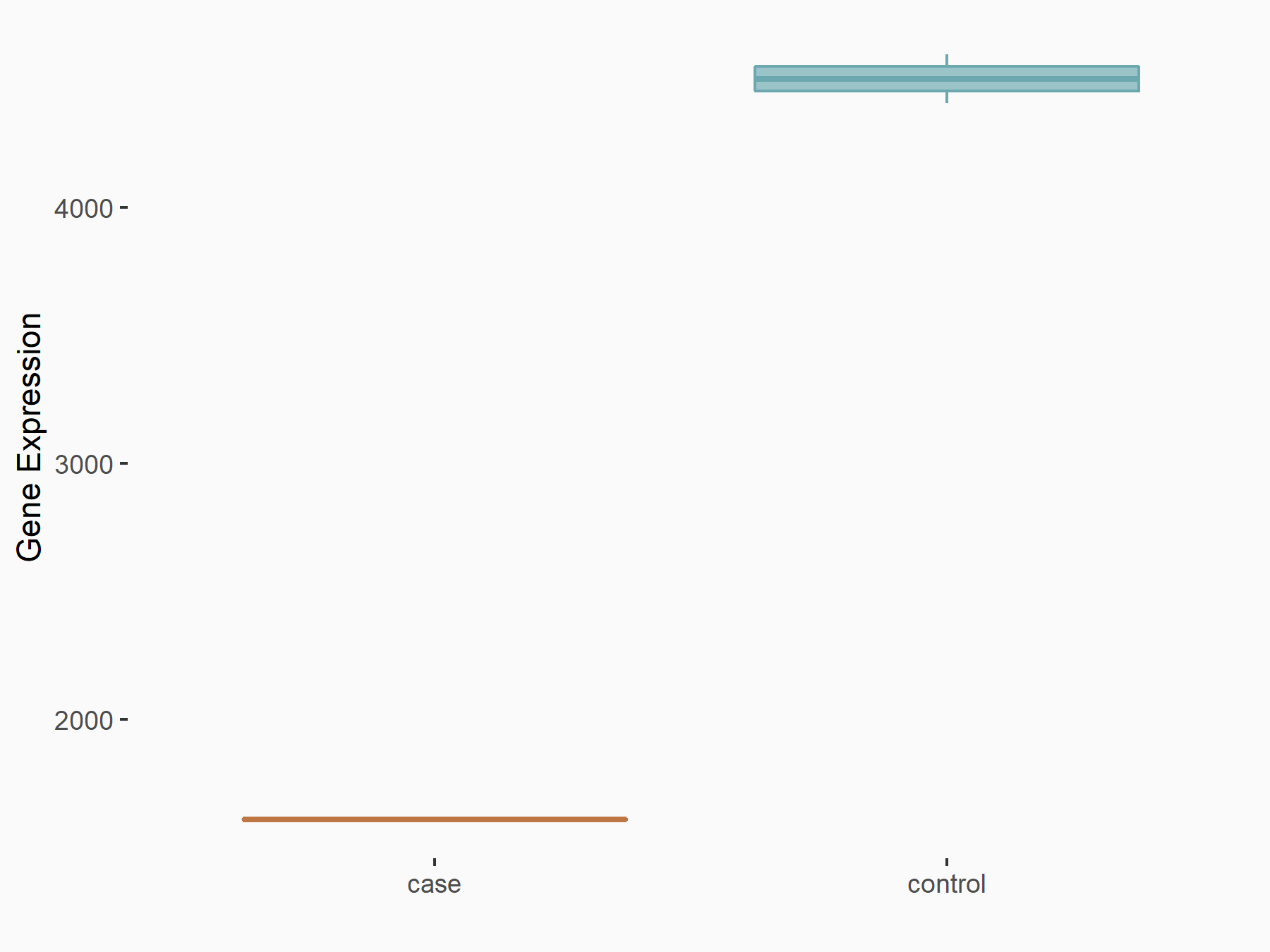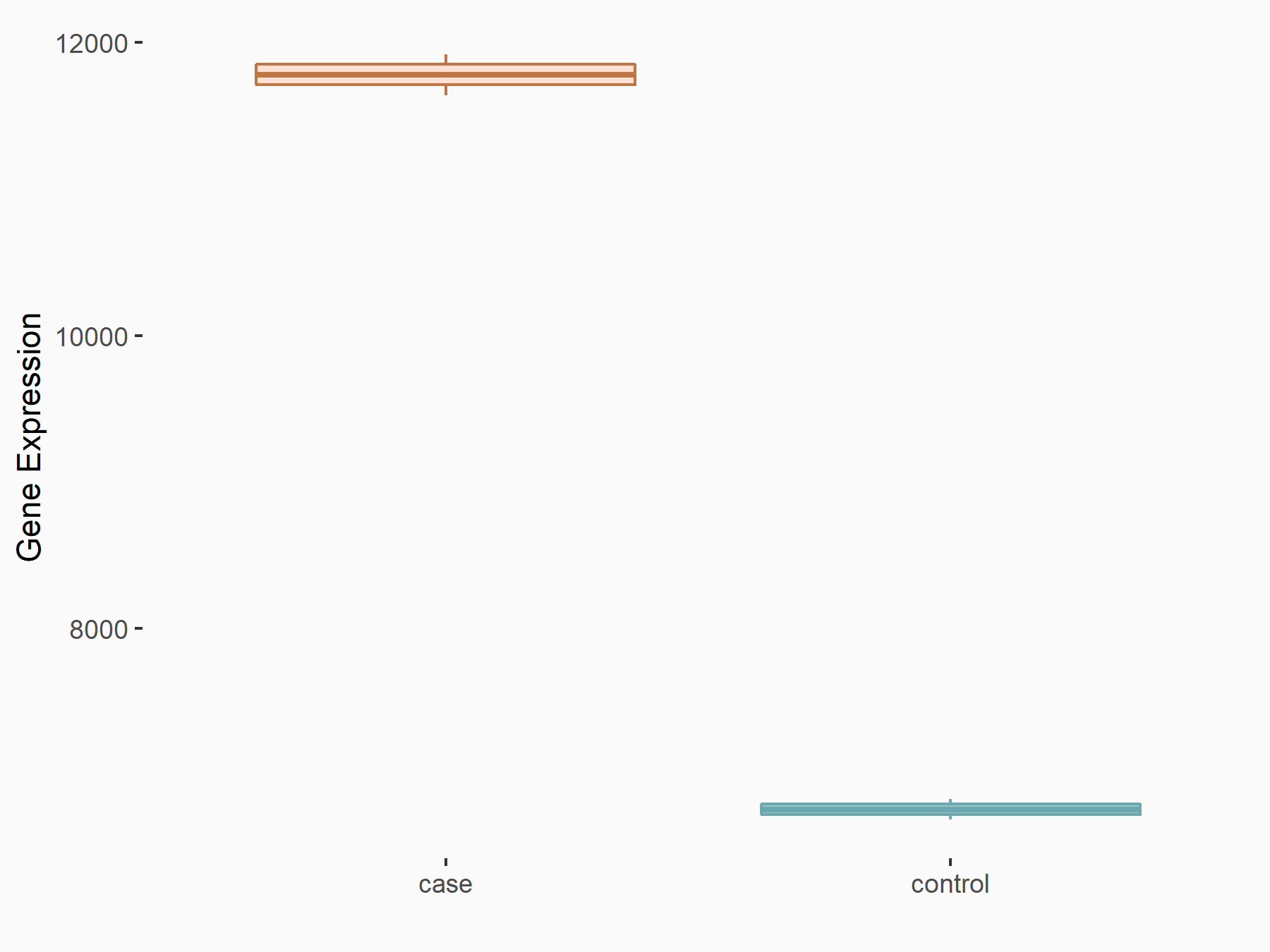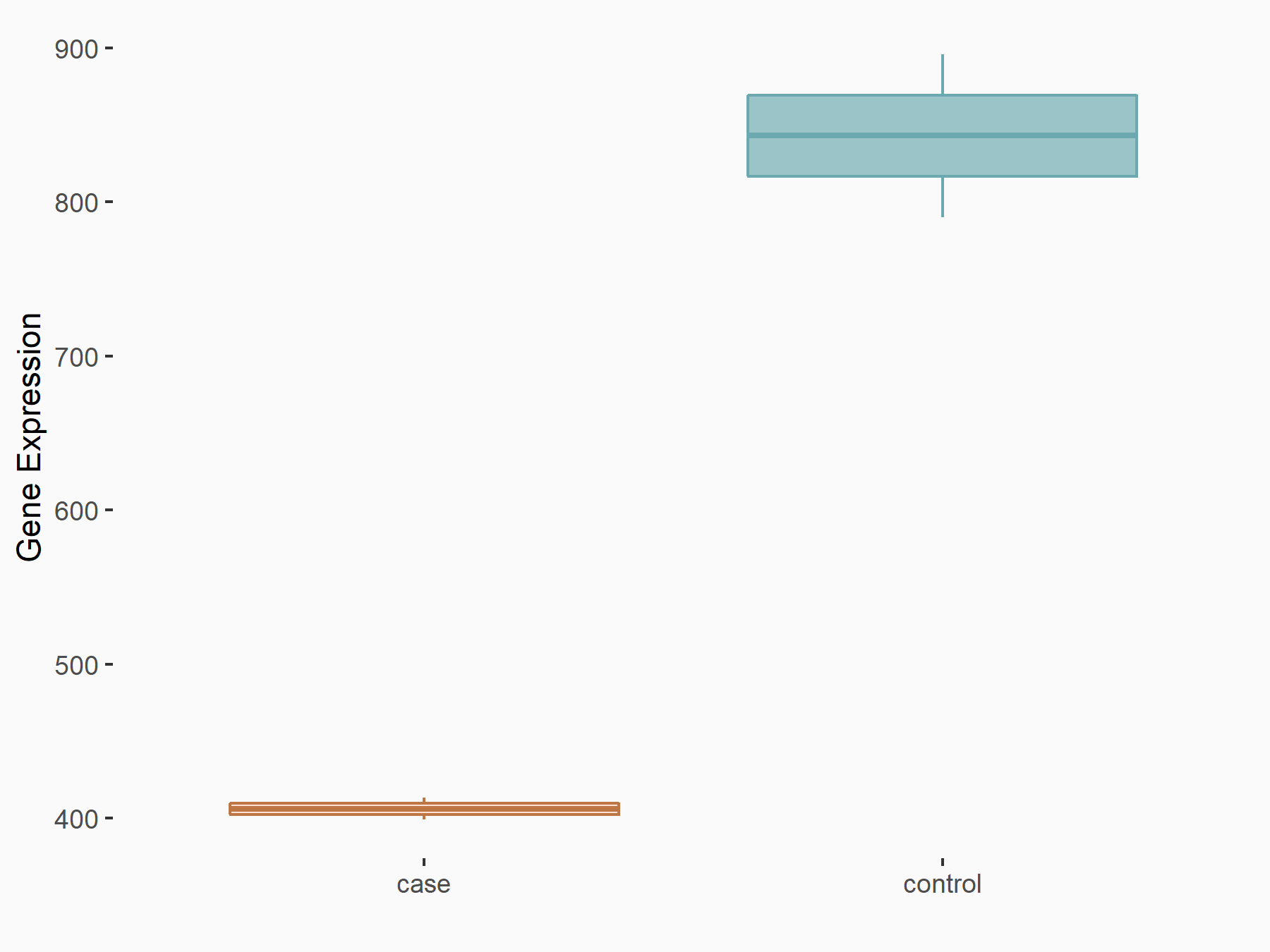m6A Target Gene Information
General Information of the m6A Target Gene (ID: M6ATAR00260)
Full List of m6A Methylation Regulator of This Target Gene and Corresponding Disease/Drug Response(s)
FOXO3
can be regulated by the following regulator(s), and cause disease/drug response(s). You can browse detail information of regulator(s) or disease/drug response(s).
Browse Regulator
Browse Disease
Browse Drug
YTH domain-containing family protein 1 (YTHDF1) [READER]
| Representative RNA-seq result indicating the expression of this target gene regulated by YTHDF1 | ||
| Cell Line | AGS cell line | Homo sapiens |
|
Treatment: shYTHDF1 AGS
Control: shNC AGS
|
GSE166972 | |
| Regulation |
  |
logFC: 1.07E+00 p-value: 3.17E-02 |
| More Results | Click to View More RNA-seq Results | |
| Representative RIP-seq result supporting the interaction between FOXO3 and the regulator | ||
| Cell Line | Hela | Homo sapiens |
| Regulation | logFC: 2.44E+00 | GSE63591 |
| In total 1 item(s) under this regulator | ||||
| Experiment 1 Reporting the m6A Methylation Regulator of This Target Gene | [1] | |||
| Response Summary | METTL3 can sensitise hepatocellular carcinoma cells to sorafenib through stabilising Forkhead box protein O3 (FOXO3) in an m6A-dependent manner and translated by YTHDF1, thereby inhibiting the transcription of autophagy-related genes, including ATG3, ATG5, ATG7, ATG12, and ATG16L1. | |||
| Target Regulation | Up regulation | |||
| Responsed Disease | Hepatocellular carcinoma | ICD-11: 2C12.02 | ||
| Responsed Drug | Sorafenib | Approved | ||
| Pathway Response | FoxO signaling pathway | hsa04068 | ||
| Cell Process | Cell autophagy | |||
Methyltransferase-like 14 (METTL14) [WRITER]
| Representative RNA-seq result indicating the expression of this target gene regulated by METTL14 | ||
| Cell Line | MDA-MB-231 | Homo sapiens |
|
Treatment: siMETTL14 MDA-MB-231 cells
Control: MDA-MB-231 cells
|
GSE81164 | |
| Regulation |
  |
logFC: -1.48E+00 p-value: 5.68E-29 |
| More Results | Click to View More RNA-seq Results | |
| In total 1 item(s) under this regulator | ||||
| Experiment 1 Reporting the m6A Methylation Regulator of This Target Gene | [2] | |||
| Response Summary | Global RNA m6A methylation and METTL14 expression were significantly increased in placental tissues obtained from patients with preeclampsia. Forkhead box protein O3 (FOXO3) inhibition effectively prevented the impairment of trophoblast proliferation and invasion, and diminished the induction of trophoblast autophagy and apoptosis in METTL14-overexpressing HTR-8/SVneo cells. | |||
| Target Regulation | Up regulation | |||
| Responsed Disease | Pre-eclampsia | ICD-11: JA24 | ||
| Cell Process | Cell autophagy | |||
| In-vitro Model | HTR-8/SVneo | Normal | Homo sapiens | CVCL_7162 |
| HTR-8 | Normal | Homo sapiens | CVCL_D728 | |
Methyltransferase-like 3 (METTL3) [WRITER]
| Representative RNA-seq result indicating the expression of this target gene regulated by METTL3 | ||
| Cell Line | mouse embryonic stem cells | Mus musculus |
|
Treatment: METTL3-/- ESCs
Control: Wild type ESCs
|
GSE145309 | |
| Regulation |
  |
logFC: 8.00E-01 p-value: 1.28E-68 |
| More Results | Click to View More RNA-seq Results | |
| In total 2 item(s) under this regulator | ||||
| Experiment 1 Reporting the m6A Methylation Regulator of This Target Gene | [3] | |||
| Response Summary | METTL3 and Forkhead box protein O3 (FOXO3) levels are tightly correlated in hepatocellular carcinoma patients. In mouse xenograft models, METTL3 depletion significantly enhances sorafenib resistance of HCC by abolishing the identified METTL3-mediated FOXO3 mRNA stabilization, and overexpression of FOXO3 restores m6 A-dependent sorafenib sensitivity. | |||
| Target Regulation | Down regulation | |||
| Responsed Disease | Hepatocellular carcinoma | ICD-11: 2C12.02 | ||
| Responsed Drug | Sorafenib | Approved | ||
| Pathway Response | FoxO signaling pathway | hsa04068 | ||
| Cell Process | Cell Transport | |||
| Cell catabolism | ||||
| Cell autophagy | ||||
| In-vitro Model | HEK293T | Normal | Homo sapiens | CVCL_0063 |
| Hepa 1-6 | Hepatocellular carcinoma of the mouse | Mus musculus | CVCL_0327 | |
| Hep-G2 | Hepatoblastoma | Homo sapiens | CVCL_0027 | |
| HUVEC-C | Normal | Homo sapiens | CVCL_2959 | |
| WRL 68 | Endocervical adenocarcinoma | Homo sapiens | CVCL_0581 | |
| In-vivo Model | For the drug-resistant subcutaneous tumor models, drug administration was adopted when the tumors reached about 50 mm3 in size, at which point mice were randomized for treatment with DMSO(intraperitoneally) or sorafenib (50 mg/kg/every 2 days, intraperitoneally). For the patient-derived tumor xenograft model, drug administration began 4 weeks after tumors reached about 100 mm3 in size with sorafenib (50 mg/kg/every 3 days, intraperitoneally) or siCtrl/siMETTL3 intratumor injection. | |||
| Experiment 2 Reporting the m6A Methylation Regulator of This Target Gene | [1] | |||
| Response Summary | METTL3 can sensitise hepatocellular carcinoma cells to sorafenib through stabilising Forkhead box protein O3 (FOXO3) in an m6A-dependent manner and translated by YTHDF1, thereby inhibiting the transcription of autophagy-related genes, including ATG3, ATG5, ATG7, ATG12, and ATG16L1. | |||
| Target Regulation | Up regulation | |||
| Responsed Disease | Hepatocellular carcinoma | ICD-11: 2C12.02 | ||
| Responsed Drug | Sorafenib | Approved | ||
| Pathway Response | FoxO signaling pathway | hsa04068 | ||
| Cell Process | Cell autophagy | |||
RNA demethylase ALKBH5 (ALKBH5) [ERASER]
| Representative RNA-seq result indicating the expression of this target gene regulated by ALKBH5 | ||
| Cell Line | 143B cell line | Homo sapiens |
|
Treatment: siALKBH5 transfected 143B cells
Control: siControl 143B cells
|
GSE154528 | |
| Regulation |
  |
logFC: -1.05E+00 p-value: 3.53E-06 |
| More Results | Click to View More RNA-seq Results | |
| In total 2 item(s) under this regulator | ||||
| Experiment 1 Reporting the m6A Methylation Regulator of This Target Gene | [4] | |||
| Response Summary | ALKBH5 plays an antitumor role in colorectal cancer by modulating the Forkhead box protein O3 (FOXO3)/miR-21/SPRY2 axis, which not only suggests a regulatory effect between ALKBH5 and FOXO3, but also provides a new therapeutic direction for colorectal cancer. | |||
| Target Regulation | Down regulation | |||
| Responsed Disease | Colorectal cancer | ICD-11: 2B91 | ||
| Pathway Response | FoxO signaling pathway | hsa04068 | ||
| In-vitro Model | Caco-2 | Colon adenocarcinoma | Homo sapiens | CVCL_0025 |
| FHC | Normal | Homo sapiens | CVCL_3688 | |
| HCT 116 | Colon carcinoma | Homo sapiens | CVCL_0291 | |
| SW480 | Colon adenocarcinoma | Homo sapiens | CVCL_0546 | |
| SW620 | Colon adenocarcinoma | Homo sapiens | CVCL_0547 | |
| Experiment 2 Reporting the m6A Methylation Regulator of This Target Gene | [5] | |||
| Response Summary | ALKBH5 was upregulated in the cardiomyocytes of diabetic cardiomyopathy mice and posttranscriptionally activated Forkhead box protein O3 (FOXO3) by m6A demethylation in an m6A-YTHDF2-dependent manner.This work reveals the key function of the ALKBH5-FOXO3-CDR1as/Hippo signaling pathway in DCM and provides insight into the critical roles of m6A methylation in DCM. | |||
| Target Regulation | Up regulation | |||
| Responsed Disease | Diabetic cardiomyopathy | ICD-11: BC43.7 | ||
| Pathway Response | Hippo signaling pathway | hsa04390 | ||
| FoxO signaling pathway | hsa04068 | |||
| Cell Process | Cell apoptosis | |||
| In-vitro Model | Neonatal rat ventricular cardiomyocytes (Primary myocyte cells) | |||
| In-vivo Model | The model mice were intraperitoneally injected with streptozotocin (STZ; Sigma-Aldrich Corp., USA). The dose of STZ was 50 mg/kg for 5 days. 7 days after the last injection, blood glucose concentrations were recorded. Mouse models of diabetes were considered established when fasting blood glucose concentrations reached >11.1 mmol/L, and body weight was measured. | |||
YTH domain-containing family protein 3 (YTHDF3) [READER]
| Representative RIP-seq result supporting the interaction between FOXO3 and the regulator | ||
| Cell Line | Hela | Homo sapiens |
| Regulation | logFC: 2.93E+00 | GSE86214 |
| In total 1 item(s) under this regulator | ||||
| Experiment 1 Reporting the m6A Methylation Regulator of This Target Gene | [6] | |||
| Response Summary | YTHDF3 as a negative regulator of antiviral immunity through the translational promotion of Forkhead box protein O3 (FOXO3) mRNA under homeostatic conditions, adding insight into the networks of RNA-binding protein-RNA interactions in homeostatically maintaining host antiviral immune function and preventing inflammatory response. | |||
| Target Regulation | Up regulation | |||
| Responsed Disease | Inflammatory response | ICD-11: MG46 | ||
| Pathway Response | FoxO signaling pathway | hsa04068 | ||
| In-vivo Model | YTHDF3-/- mice were generated using the CRISPR-Cas9 system. | |||
Colorectal cancer [ICD-11: 2B91]
| In total 1 item(s) under this disease | ||||
| Experiment 1 Reporting the m6A-centered Disease Response | [4] | |||
| Response Summary | ALKBH5 plays an antitumor role in colorectal cancer by modulating the Forkhead box protein O3 (FOXO3)/miR-21/SPRY2 axis, which not only suggests a regulatory effect between ALKBH5 and FOXO3, but also provides a new therapeutic direction for colorectal cancer. | |||
| Responsed Disease | Colorectal cancer [ICD-11: 2B91] | |||
| Target Regulator | RNA demethylase ALKBH5 (ALKBH5) | ERASER | ||
| Target Regulation | Down regulation | |||
| Pathway Response | FoxO signaling pathway | hsa04068 | ||
| In-vitro Model | Caco-2 | Colon adenocarcinoma | Homo sapiens | CVCL_0025 |
| FHC | Normal | Homo sapiens | CVCL_3688 | |
| HCT 116 | Colon carcinoma | Homo sapiens | CVCL_0291 | |
| SW480 | Colon adenocarcinoma | Homo sapiens | CVCL_0546 | |
| SW620 | Colon adenocarcinoma | Homo sapiens | CVCL_0547 | |
Liver cancer [ICD-11: 2C12]
| In total 3 item(s) under this disease | ||||
| Experiment 1 Reporting the m6A-centered Disease Response | [3] | |||
| Response Summary | METTL3 and Forkhead box protein O3 (FOXO3) levels are tightly correlated in hepatocellular carcinoma patients. In mouse xenograft models, METTL3 depletion significantly enhances sorafenib resistance of HCC by abolishing the identified METTL3-mediated FOXO3 mRNA stabilization, and overexpression of FOXO3 restores m6 A-dependent sorafenib sensitivity. | |||
| Responsed Disease | Hepatocellular carcinoma [ICD-11: 2C12.02] | |||
| Target Regulator | Methyltransferase-like 3 (METTL3) | WRITER | ||
| Target Regulation | Down regulation | |||
| Responsed Drug | Sorafenib | Approved | ||
| Pathway Response | FoxO signaling pathway | hsa04068 | ||
| Cell Process | Cell Transport | |||
| Cell catabolism | ||||
| Cell autophagy | ||||
| In-vitro Model | HEK293T | Normal | Homo sapiens | CVCL_0063 |
| Hepa 1-6 | Hepatocellular carcinoma of the mouse | Mus musculus | CVCL_0327 | |
| Hep-G2 | Hepatoblastoma | Homo sapiens | CVCL_0027 | |
| HUVEC-C | Normal | Homo sapiens | CVCL_2959 | |
| WRL 68 | Endocervical adenocarcinoma | Homo sapiens | CVCL_0581 | |
| In-vivo Model | For the drug-resistant subcutaneous tumor models, drug administration was adopted when the tumors reached about 50 mm3 in size, at which point mice were randomized for treatment with DMSO(intraperitoneally) or sorafenib (50 mg/kg/every 2 days, intraperitoneally). For the patient-derived tumor xenograft model, drug administration began 4 weeks after tumors reached about 100 mm3 in size with sorafenib (50 mg/kg/every 3 days, intraperitoneally) or siCtrl/siMETTL3 intratumor injection. | |||
| Experiment 2 Reporting the m6A-centered Disease Response | [1] | |||
| Response Summary | METTL3 can sensitise hepatocellular carcinoma cells to sorafenib through stabilising Forkhead box protein O3 (FOXO3) in an m6A-dependent manner and translated by YTHDF1, thereby inhibiting the transcription of autophagy-related genes, including ATG3, ATG5, ATG7, ATG12, and ATG16L1. | |||
| Responsed Disease | Hepatocellular carcinoma [ICD-11: 2C12.02] | |||
| Target Regulator | Methyltransferase-like 3 (METTL3) | WRITER | ||
| Target Regulation | Up regulation | |||
| Responsed Drug | Sorafenib | Approved | ||
| Pathway Response | FoxO signaling pathway | hsa04068 | ||
| Cell Process | Cell autophagy | |||
| Experiment 3 Reporting the m6A-centered Disease Response | [1] | |||
| Response Summary | METTL3 can sensitise hepatocellular carcinoma cells to sorafenib through stabilising Forkhead box protein O3 (FOXO3) in an m6A-dependent manner and translated by YTHDF1, thereby inhibiting the transcription of autophagy-related genes, including ATG3, ATG5, ATG7, ATG12, and ATG16L1. | |||
| Responsed Disease | Hepatocellular carcinoma [ICD-11: 2C12.02] | |||
| Target Regulator | YTH domain-containing family protein 1 (YTHDF1) | READER | ||
| Target Regulation | Up regulation | |||
| Responsed Drug | Sorafenib | Approved | ||
| Pathway Response | FoxO signaling pathway | hsa04068 | ||
| Cell Process | Cell autophagy | |||
Ovarian dysfunction [ICD-11: 5A80]
Cardiomyopathy [ICD-11: BC43]
| In total 1 item(s) under this disease | ||||
| Experiment 1 Reporting the m6A-centered Disease Response | [5] | |||
| Response Summary | ALKBH5 was upregulated in the cardiomyocytes of diabetic cardiomyopathy mice and posttranscriptionally activated Forkhead box protein O3 (FOXO3) by m6A demethylation in an m6A-YTHDF2-dependent manner.This work reveals the key function of the ALKBH5-FOXO3-CDR1as/Hippo signaling pathway in DCM and provides insight into the critical roles of m6A methylation in DCM. | |||
| Responsed Disease | Diabetic cardiomyopathy [ICD-11: BC43.7] | |||
| Target Regulator | RNA demethylase ALKBH5 (ALKBH5) | ERASER | ||
| Target Regulation | Up regulation | |||
| Pathway Response | Hippo signaling pathway | hsa04390 | ||
| FoxO signaling pathway | hsa04068 | |||
| Cell Process | Cell apoptosis | |||
| In-vitro Model | Neonatal rat ventricular cardiomyocytes (Primary myocyte cells) | |||
| In-vivo Model | The model mice were intraperitoneally injected with streptozotocin (STZ; Sigma-Aldrich Corp., USA). The dose of STZ was 50 mg/kg for 5 days. 7 days after the last injection, blood glucose concentrations were recorded. Mouse models of diabetes were considered established when fasting blood glucose concentrations reached >11.1 mmol/L, and body weight was measured. | |||
Pre-eclampsia [ICD-11: JA24]
| In total 1 item(s) under this disease | ||||
| Experiment 1 Reporting the m6A-centered Disease Response | [2] | |||
| Response Summary | Global RNA m6A methylation and METTL14 expression were significantly increased in placental tissues obtained from patients with preeclampsia. Forkhead box protein O3 (FOXO3) inhibition effectively prevented the impairment of trophoblast proliferation and invasion, and diminished the induction of trophoblast autophagy and apoptosis in METTL14-overexpressing HTR-8/SVneo cells. | |||
| Responsed Disease | Pre-eclampsia [ICD-11: JA24] | |||
| Target Regulator | Methyltransferase-like 14 (METTL14) | WRITER | ||
| Target Regulation | Up regulation | |||
| Cell Process | Cell autophagy | |||
| In-vitro Model | HTR-8/SVneo | Normal | Homo sapiens | CVCL_7162 |
| HTR-8 | Normal | Homo sapiens | CVCL_D728 | |
Inflammatory response [ICD-11: MG46]
| In total 1 item(s) under this disease | ||||
| Experiment 1 Reporting the m6A-centered Disease Response | [6] | |||
| Response Summary | YTHDF3 as a negative regulator of antiviral immunity through the translational promotion of Forkhead box protein O3 (FOXO3) mRNA under homeostatic conditions, adding insight into the networks of RNA-binding protein-RNA interactions in homeostatically maintaining host antiviral immune function and preventing inflammatory response. | |||
| Responsed Disease | Inflammatory response [ICD-11: MG46] | |||
| Target Regulator | YTH domain-containing family protein 3 (YTHDF3) | READER | ||
| Target Regulation | Up regulation | |||
| Pathway Response | FoxO signaling pathway | hsa04068 | ||
| In-vivo Model | YTHDF3-/- mice were generated using the CRISPR-Cas9 system. | |||
Sorafenib
[Approved]
| In total 3 item(s) under this drug | ||||
| Experiment 1 Reporting the m6A-centered Drug Response | [3] | |||
| Response Summary | METTL3 and Forkhead box protein O3 (FOXO3) levels are tightly correlated in hepatocellular carcinoma patients. In mouse xenograft models, METTL3 depletion significantly enhances sorafenib resistance of HCC by abolishing the identified METTL3-mediated FOXO3 mRNA stabilization, and overexpression of FOXO3 restores m6 A-dependent sorafenib sensitivity. | |||
| Target Regulator | Methyltransferase-like 3 (METTL3) | WRITER | ||
| Target Regulation | Down regulation | |||
| Responsed Disease | Hepatocellular carcinoma | ICD-11: 2C12.02 | ||
| Pathway Response | FoxO signaling pathway | hsa04068 | ||
| Cell Process | Cell Transport | |||
| Cell catabolism | ||||
| Cell autophagy | ||||
| In-vitro Model | HEK293T | Normal | Homo sapiens | CVCL_0063 |
| Hepa 1-6 | Hepatocellular carcinoma of the mouse | Mus musculus | CVCL_0327 | |
| Hep-G2 | Hepatoblastoma | Homo sapiens | CVCL_0027 | |
| HUVEC-C | Normal | Homo sapiens | CVCL_2959 | |
| WRL 68 | Endocervical adenocarcinoma | Homo sapiens | CVCL_0581 | |
| In-vivo Model | For the drug-resistant subcutaneous tumor models, drug administration was adopted when the tumors reached about 50 mm3 in size, at which point mice were randomized for treatment with DMSO(intraperitoneally) or sorafenib (50 mg/kg/every 2 days, intraperitoneally). For the patient-derived tumor xenograft model, drug administration began 4 weeks after tumors reached about 100 mm3 in size with sorafenib (50 mg/kg/every 3 days, intraperitoneally) or siCtrl/siMETTL3 intratumor injection. | |||
| Experiment 2 Reporting the m6A-centered Drug Response | [1] | |||
| Response Summary | METTL3 can sensitise hepatocellular carcinoma cells to sorafenib through stabilising Forkhead box protein O3 (FOXO3) in an m6A-dependent manner and translated by YTHDF1, thereby inhibiting the transcription of autophagy-related genes, including ATG3, ATG5, ATG7, ATG12, and ATG16L1. | |||
| Target Regulator | Methyltransferase-like 3 (METTL3) | WRITER | ||
| Target Regulation | Up regulation | |||
| Responsed Disease | Hepatocellular carcinoma | ICD-11: 2C12.02 | ||
| Pathway Response | FoxO signaling pathway | hsa04068 | ||
| Cell Process | Cell autophagy | |||
| Experiment 3 Reporting the m6A-centered Drug Response | [1] | |||
| Response Summary | METTL3 can sensitise hepatocellular carcinoma cells to sorafenib through stabilising Forkhead box protein O3 (FOXO3) in an m6A-dependent manner and translated by YTHDF1, thereby inhibiting the transcription of autophagy-related genes, including ATG3, ATG5, ATG7, ATG12, and ATG16L1. | |||
| Target Regulator | YTH domain-containing family protein 1 (YTHDF1) | READER | ||
| Target Regulation | Up regulation | |||
| Responsed Disease | Hepatocellular carcinoma | ICD-11: 2C12.02 | ||
| Pathway Response | FoxO signaling pathway | hsa04068 | ||
| Cell Process | Cell autophagy | |||
References